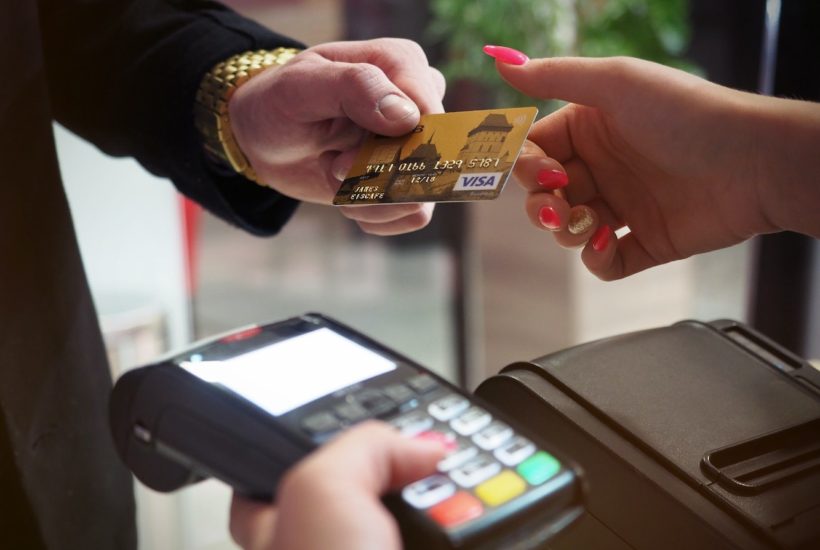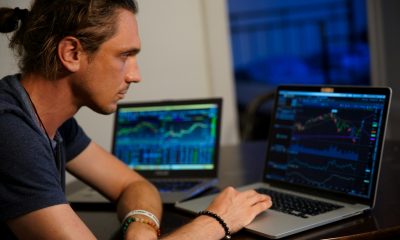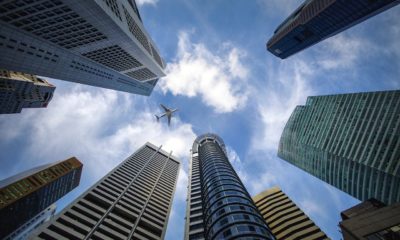Business
The future of banking: branchless or not?
This article about the branch vs. branchless debate presents a new vision for the future of banking branches – speculations and suggestions on where the banking market is going over the next several decades. Branchless banks are growing because of advances in mobile identification technology like multi-factor authentication, touch-id, face id, voice id, and so on.

From a local real estate owner to a global financial institution
There are 75 thousand bank branches worldwide. Importantly, the number is still growing, and it is clear why. The tried-and-tested branch cultivates customer loyalty, drives sales, and helps to authenticate customers in-person. It is also expensive. High operational costs were one of the primary reasons for the creation of first branchless banks in the first place.
Current-day branchless technology has evolved to become much more cost-efficient and versatile. Still, it’s not without its caveats: remote authentication methods such as 2FA, biometrics, and digital fingerprints have already been exploited and compromised. They are not future-proof. And there lies the biggest danger to branchless banking.
A global network of branches for all financial institutions
Now, let’s imagine for a moment that these 75 thousand branches form a separate unit, a standalone network. Separate from banks but accessible for a membership fee to them and other financial institutions such as brokers, financial advisers, payment providers, currency exchange and money transfer services, and many other financial institutions.
The following examples are banking-related services that require and benefit from physical presence:
1. Reliable identification process. Branchless banks are growing because of advances in mobile identification technology like multi-factor authentication, touch-id, face id, voice id, etc. These identification methods work fine for general everyday transactions but are not secure enough for high-value ones. Large scale transactions still require some combination of industrial-grade biometrics and human to human interaction.
Imagine that each branch now has a facility that allows customers to verify their identity with absolute certainty using industrial-grade biometric scanners. It doesn’t matter if you are on holiday in Sri Lanka or at home in London, all you have to do is come in, identify yourself, and confirm the transaction.
If everything is in order, you go on using your login and biometric credentials. If not, the bank can investigate whether your credentials were compromised and determine the source of the breach while your assets remain safe.
Confirming who’s who on both sides of a transaction not only helps to prevent fraud, money laundering, and cybercrime but protects all parties from man-in-the-middle and physical attacks.
2. Physical meetings. A good space for negotiations requires proper protection from eavesdropping and a nice interior on top of advanced authentication. Modern technology allows us to extend the capabilities of such negotiation spaces with a secure internet connection and highly encrypted video conference equipment. At least in theory, this could lead to a global network of highly secure meeting rooms allowing to share sensitive information and share impactful ideas.
Shared bank branches could be used for in-person meetings between company representatives and clients to provide guidance for more complex financial products and services – a vital tool not only for cultivating customer loyalty but also for keeping customers happy.
If you are looking to get a mortgage, you could schedule a meeting with your bank’s representative to go over details and terms in person in a branch closest to you: in New York, Tokyo, or Vyshneve. Wherever you are.
But let’s say that you also want to weigh your options, so you schedule another appointment with a P2P lender in the same place. You can then attend both meetings, determine which provider is better for you, and use the identification facilities to verify your identity and sign an agreement – all without leaving the branch.
3. Financial education. Having space where lots of assets change hands, and many financial and business experts get together should be a go-to place to learn about finance, business, and economics in general. Free lectures and workshops are a way for aspiring experts to earn recognition, while paid lectures and tutorials allow established experts to monetize their recognition. Educational events and opportunities within everyday places of work would facilitate more and better knowledge sharing.
It all comes down to traditional banks adapting their business models to make better use of their real estate. From a local property owner to a member of a global network of financial hubs in every city on Earth. Global representation is a big step for any local bank.
A good example of the same approach that works
In terms of infrastructure and data exchange, we already have a great example: the current ATM network services clients from any bank at any ATM around the world. For a small share of the costs, consumers and banks get access to a genuinely global and functional network. The system already exists, albeit for a different purpose.
However, the merging process for branches belonging to many separate banks does require some effort. A global network of financial hubs would at least require a unified standard for things like encrypted connection for video calls, global data management and protection patterns, biometric identification standards, physical security standards, and many more.
In a way, this model refines the focus on what banks have been throughout history – trust networks. The world needs a trusted network on a global scale as never before.
What do you think the future of banking will look like? Feel free to share your thoughts.
—
(Featured image by energepic.com via Pexels)
DISCLAIMER: This article was written by a third party contributor and does not reflect the opinion of Born2Invest, its management, staff or its associates. Please review our disclaimer for more information.
This article may include forward-looking statements. These forward-looking statements generally are identified by the words “believe,” “project,” “estimate,” “become,” “plan,” “will,” and similar expressions. These forward-looking statements involve known and unknown risks as well as uncertainties, including those discussed in the following cautionary statements and elsewhere in this article and on this site. Although the Company may believe that its expectations are based on reasonable assumptions, the actual results that the Company may achieve may differ materially from any forward-looking statements, which reflect the opinions of the management of the Company only as of the date hereof. Additionally, please make sure to read these important disclosures.

-

 Crypto1 week ago
Crypto1 week agoTether Targets $500 Billion Valuation in Landmark Funding Push
-

 Crypto2 weeks ago
Crypto2 weeks agoXRP Poised for a Breakout: Why 2026 Could Finally Deliver the Growth 2025 Delayed
-

 Markets2 days ago
Markets2 days agoDow Jones Strength Faces Risk From a Potential Yen Carry Trade Unwind
-

 Business1 week ago
Business1 week agoPrecious Metals’ Bull Market Continues

























